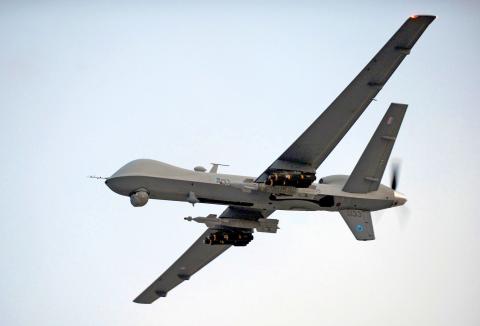LETHAL DRONES AT THE U.S.-MEXICO BORDER?

by Laurie Calhoun
Not all of the Republican lawmakers who support this idea have openly embraced the use of lethal drones to eliminate such persons, but that would be the inevitable policy implication of such labeling, given the wording of anti-terrorist legislation. At least one presidential candidate, Vivek Ramaswamy, has said the quiet part out loud: lethal drones should be deployed at the U.S.-Mexico border. There can be little doubt that the many other politicians declaring "war" on the cartels are well aware that lethal force will be used once the fentanyl producers have been designated terrorists, and the current tool of choice among self-styled smart warriors is the unmanned combat aerial vehicle (UCAV) or lethal drone.
The superficially plausible assumption behind this proposal is that if the flow of fentanyl is stanched, then the overdose deaths will subside. But the prospect of deploying lethal drones at the U.S.-Mexico border is a simplistic plan for addressing a very complicated problem. There are dozens of reasons for opposing this approach, on moral, legal, cultural, and geopolitical grounds. Most of those arguments, however, will fall on deaf ears and certainly not deter politicians from plundering ahead, expanding the domain of the killing machine once again, having been, in at least some cases, sincerely persuaded that they are acting not to enrich death industry profiteers but to defend the people of the United States from foreign enemies. The only way to prevent the deployment of lethal drones at the border from happening will be persuasively to demonstrate that the plan could never succeed, on purely tactical grounds. Two fatal flaws virtually guarantee that, if implemented, the plan would not have the desired effect, as can be seen through a consideration of the origins of the opioid crisis and the cross-border use of lethal drones in the Middle East.




























Comments
They flew them out of Yuma when I was last there
Comment